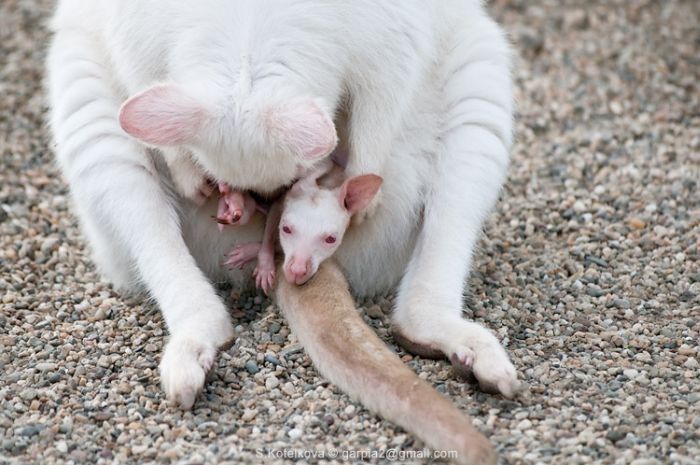|
|
Mother And Baby White Kangaroo
|
Fighting has been described in all species of kangaroos. Fights between kangaroos can be brief or long and ritualised. In highly competitive situations such as males fighting for access to oestrous females or at limited drinking spots, the fights are brief. Both sexes will fight for drinking spots, but long, ritualised fighting or "boxing" is largely done by males. Smaller males fight more often near females in oestrus, while the large males in consorts do not seem to get involved. Ritualised fights can arise suddenly when males are grazing together. However, most fights are preceded by two males scratching and grooming each other. One or both of them will adopt a high standing posture, with one male issuing a challenge by grasping the other male’s neck with its forepaw. Sometimes, the challenge will be declined. Large males often reject challenges by smaller males. During fighting, the combatants adopt a high standing posture and paw at each other's heads, shoulders and chests. They will also lock forearms and wrestle and push each other as well as balance on their tails to kick each other in the abdomens.
Brief fights are similar except there is no forearm locking. The losing combatant seems to use kicking more often, perhaps to parry the thrusts of the eventual winner. Winners are decided when a kangaroo breaks off the fight and retreats. Winners are able to push their opponents backwards or down to the ground. They also seem to grasp their opponents when they break contact and push them away. The initiators of the fights are usually the winners. These fights may serve to establish dominance hierarchies among males, as winners of fights have been seen to displace their opponent from resting sites later in the day. Dominant males may also pull grass to intimidate subordinates.
• Predators
Kangaroos have few natural predators. The thylacine, considered by palaeontologists to have once been a major natural predator of the kangaroo, is now extinct. Other extinct predators included the marsupial lion, Megalania and the Wonambi. However, with the arrival of humans in Australia at least 50,000 years ago and the introduction of the dingo about 5,000 years ago, kangaroos have had to adapt. Wedge-tailed eagles and other raptors usually eat kangaroo carrion. Goannas and other carnivorous reptiles also pose a danger to smaller kangaroo species when other food sources are lacking.
|
|









